The following contains helpful information to gain the knowledge and skills to be successful in an online environment. Expand each list item below to access more information.
Please click here for instructions.
Access is available to following software:
Click anywhere to begin the VoiceThread below. To navigate the slides, please use the arrow in the bottom right corner.
Nelson, C. (2022). Building an Online Community. [Video]. VoiceThread file. https://usi.voicethread.com/share/11952985/
Having a technical problem with Honorlock? Get help through Honorlock directly.
Honorlock offers 24/7 support.
For live support and more information, visit Honorlock's Support Page. You can also check out the Honorlock Knowledge Base Help Center to read articles categorized by topic.
If Honorlock isn't working for you, Online Learning has created a Troubleshooting page to help. Click the button below.
Honorlock Troubleshooting Tips
To see if your technology is compatible with Honorlock, complete the Honorlock System Check.
1. Why is USI offering online proctoring?
USI cares about student learning. Online proctoring ensures fairness and levels the playing field for all students. Read more about how online proctored exams help students.
2. What is Honorlock?
Honorlock is a remote proctoring service that creates a fair testing environment for all students by protecting exams and academic integrity.
3. Why was Honorlock chosen?
Honorlock provides students with a convenient option for taking an online exam without having to travel to a testing center/campus or schedule the exam ahead of time. Honorlock's proctoring software monitors the exam sessions and alerts a live test proctor if it detects any problems, meaning students won't be watched during the entire exam.
4. How do I install Honorlock?
Students will need to use the Google Chrome browser and install the Honorlock Chrome extension. Then, they simply log into Blackboard like normal and begin the exam. Once the test begins, Honorlock will walk the student through a quick 60-second pre-test checklist to make sure they're ready for the proctored exam. Our authentication process allows them to quickly begin the proctored exam.
See also:
5. If my online exam requires proctoring, what will my students need?
Operating System
Browser/Extension
Internet Speed
Other
NOTE: Students should be prepared to scan the room with a webcam.
6. Is online proctoring required for all online exams?
No. Online proctoring for exams is an option that instructors may or may not require for course exams. If the instructor has enabled online proctoring for an exam, then it is required of all students in the class. If you have an online exam that requires proctoring via Honorlock, a notification will be provided within the course syllabus.
7. What about student privacy?
Test taker privacy is extremely important to Honorlock online proctoring. You can find Test Taker Privacy Statement and FAQ at Honorlock's Test Taker Privacy Resources site.
8. What about accessibility?
Honorlock is compatible with a number of screen readers and accessibility tools.
9. Can I see what it looks like to use Honorlock?
Faculty resources from Honorlock:
Student resources from Honorlock:
The Guidelines for Online Learning Equivalent Instructional Activities (EIAs) assists in correlating online course content, learning activities and assessments to the credit hour standard. These guidelines are intended to assure consistency across the University for evaluating equivalencies between online and face-to-face classroom instructional activities and allocating instructional time for each activity.
Please click here to login for access to instructions on installing the USI VPN client.
The Online Learning office offers comprehensive consultation to help faculty design in the online environment, answer questions, and solve any issues they might be experiences in their current online courses.
Our experienced team of instructional designers will be ready to assist you with topics related to teaching techniques, course design, the online learning environment, and the instructional technologies.
To schedule an appointment, email online.support@usi.edu. Please include your contact information, the best time to reach you, and a brief summary of the topic you would like to discuss during the meeting.
Tech Takeaways are quick video tutorials on using the above technologies. Please view the Tech Takeaways page to learn more.
Video Conferencing with Zoom
Zoom is a desktop video conferencing solution perfect for meeting with individuals or groups.
Types of Zoom Accounts:
Getting the Appropriate Account Type:
Downloading the Zoom Client:
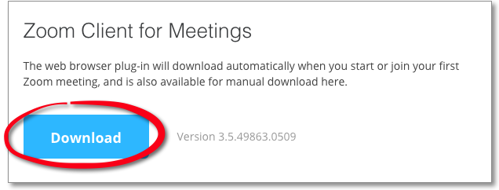
Logging in to Zoom:
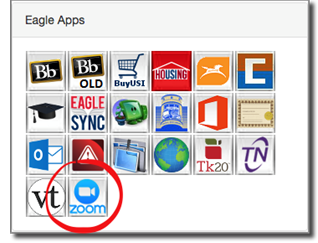
Joining a Zoom Meeting:
To join a scheduled meeting, you can do ONE of the following options:
View the brief Join a Meeting video for more information.
Scheduling a Zoom Meeting:
Starting a Scheduled Zoom Meeting:

Using Additional Zoom Features:
Meeting Controls:
Zoom Advanced Settings:
Sharing your Screen:
Recording a Zoom Meeting:
Using Breakout Rooms During a Meeting:
Polling for Zoom Meetings and Webinars:
How to Use Waiting Rooms to Manage Office Hours & Drop-In Visitor Times:
Enabling Closed Captions:
Tips and Tricks for Teachers Educating on Zoom (PDF)
Best Practices for Using Zoom for Web Conferencing (PDF: faculty - place in BB if appropriate)
Comprehensive Guide to Educating Through Zoom (PDF)
For additional Zoom tutorials, please go to the Zoom Help Center.
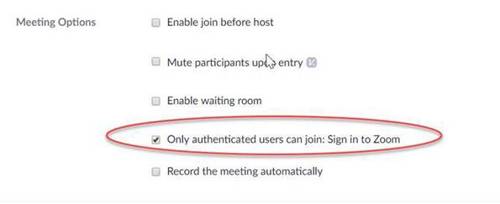
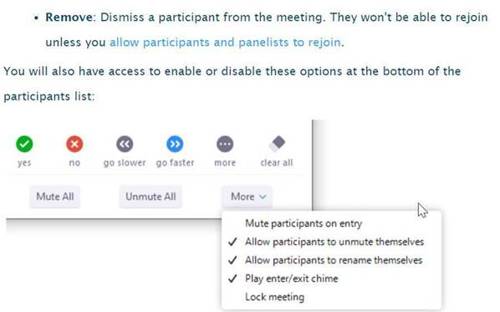
Edit/Create Content:
Set up Blackboard Course to Distribute Materials:
Add Blackboard Communication Tools to Interact with Students:
Configure Blackboard Tools with Assignments and Assessments:
Grading in Blackboard:
If you already have exams or quizzes created on a Word document and would like to convert them to Blackboard content, please follow the steps below.
This supports Multiple Choice, Multiple Answer, True/False, Essay, Matching, and Fill-in-the-Blank questions.
Please view the video below for more information.
The Online Learning Office is committed to providing faculty with all they need to be successful in teaching in an online environment. We offer many services that range from how to develop an online course to training on how to use programs such as VoiceThread and many other services. To learn more about specific technology and software, you can visit the links below that provide you with information regarding specific programs that we recommend.
For assistance, please email online.support@usi.edu to schedule an appointment with an instructional designer.
Tech Takeaways are quick video tutorials on using the above technologies. Please view the Tech Takeaways page to learn more.
The LibGuide provides research services and support for USI's online community of learners and instructors.
Quality Matters (QM) is a faculty-centered, nationally recognized, peer review process that is designed to certify the quality of online courses and online components. The peer review process is based on the Quality Matters Rubric, which is comprised of 8 General Standards and 43 Specific Review Standards.
The Eight General Standards:
The University of Southern Indiana is a Quality Matters subscribing institution. Every semester, Online Learning hosts QM workshops to help faculty become familiar with the review process and rubric.
If you are interested in learning more about the QM review process and rubric or becoming a Peer Reviewer, please email Online Learning.
Templates
Instructions to upload Online Learning Blackboard (Bb) template
Download the Bb template you would like to use by clicking on the following links
Department/Program Specific Templates:
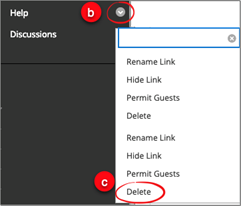
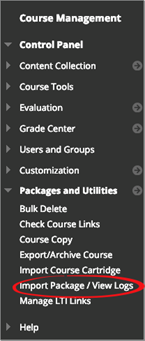
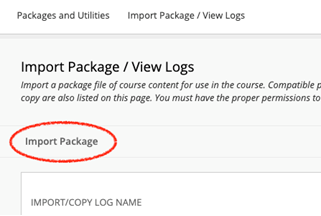
Online Learning offers the Online Course Development Program (OCDP) three times a year.
Faculty participate in the OCDP as a cohort. Each cohort will work in the semester prior and develop online courses for the following semester. For example, the Summer 2024 OCDP cohort develops Fall 2024 courses; the Fall 2024 OCDP cohort develops Spring 2025 courses, etc.
The OCDP encourages and accelerates the development of quality online programs that align with the university's strategic priorities. These priorities include, but are not limited to, the development of courses for Core 39, online degree programs, and high demand courses.
Program Overview
The estimated time commitment is 60+ hours to complete the program requirements. By submitting a proposal and approval form, the faculty agrees to:
Eligibility for Course Revision
A course that has been previously developed in the OCDP may be eligible for a course revision. A faculty member may propose a course for course revision and participate in the OCDP cohort if at least one of the following criteria is met:
Stipend
For faculty, the stipend ($1000/credit hour not to exceed $4000 for a new course development) or ($1000 total for a course revision) paid pursuant to this Program is pay for the performance of duties that are outside the scope of the academic period of their contracted agreement and, for administrative staff, for the performance of duties that are outside the usual position function and schedule.
Participants may receive only one stipend per semester under the program.
The development of the course is considered to be a Work-Made-for-Hire under USI's Intellectual Property Policy.
The stipend will be released only after participants have completed the OCDP Program Requirements.
If selected, stipends paid pursuant to this Program are Academic Supplemental or Supplemental pay under the university's Stipend and Supplemental Pay Policy.
Program Schedule
Fall 2025 Cohort Schedule (May 14 - August 8, 2025)
Submission Process
Learning to Teach Online (LTO) is a self-paced online course in Blackboard designed to provide resources necessary to successfully teach an online course. The focus is on the delivery of an online course, not the design. The course is open to USI faculty and USI administrative employees. Meeting with an Instructional Designer to address questions that arise or seek assistance is provided throughout the course. The LTO is comprised of 4 modules that include:
Request:
USI Self-Paced Online Professional Development Request Form
Have further questions?
Contact Online Learning: email or call (812) 228-5124 to schedule a consultation.
The Self-Paced Online Course Development Program (OCDP) is a professional development program intended to support faculty in the design and development of quality online courses. The program is entirely online in Blackboard and is open to USI faculty and USI administrative employees. Throughout the online course an assigned Instructional Designer will be available for consultations to answer questions, look over the required deliverables, and brainstorm different ideas. The Self-Paced OCDP has 10 modules that include:
The developed courses will be evaluated using the Quality Matters (QM) 7th edition rubric.
Request:
USI Self-Paced Online Professional Development Request Form
Have further questions?
Contact Online Learning: Email online.support@usi.edu or call 812-228-5124 for a consultation.
The Online Learning office offers comprehensive consultation to help faculty design in the online environment, answer questions, and solve any issues they might be experiences in their current online courses.
Our experienced team of instructional designers will be ready to assist you with topics related to teaching techniques, course design, the online learning environment, and the instructional technologies.
To schedule an appointment, email online.support@usi.edu. Please include your contact information, the best time to reach you, and a brief summary of the topic you would like to discuss during the meeting.